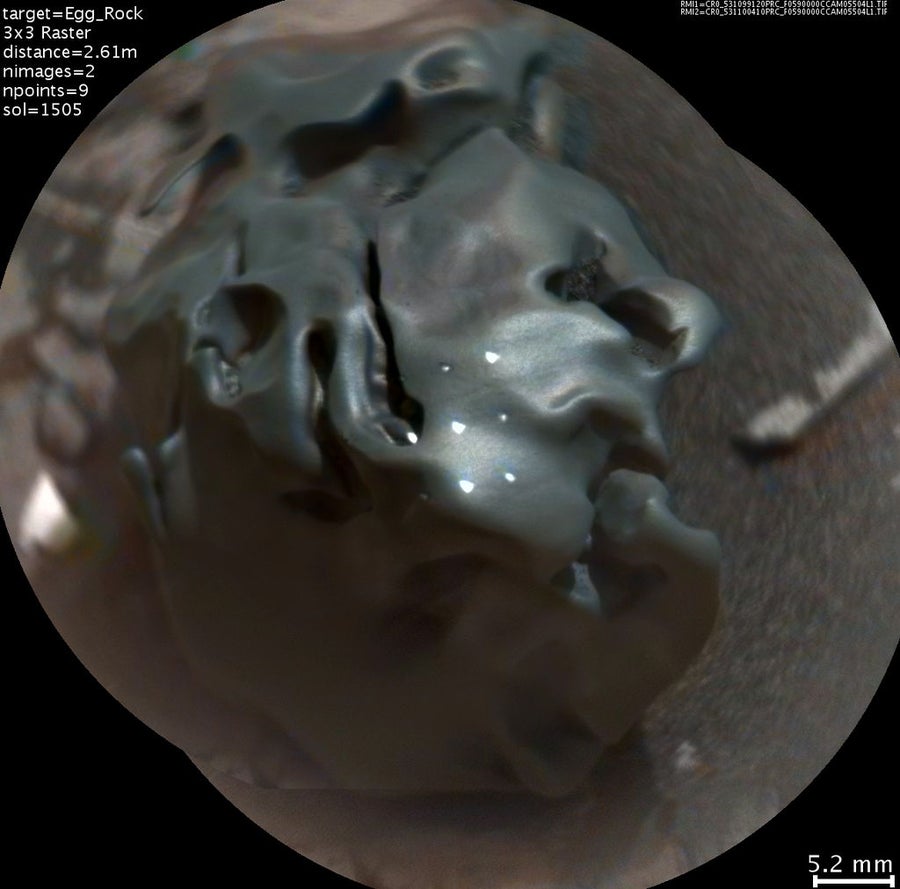This article was published in Scientific American’s former blog network and reflects the views of the author, not necessarily those of Scientific American
I've written a lot about Mars recently, and that's because there's a lot going on there: We've got fantastic new data streaming in from orbital missions, unfortunate spacecraft failures peppering the planet's surface, and revived dreams of human colonization and terraforming.
We've also got the Curiosity rover trundling around the landscape of Mount Sharp and learning more and more about martian geology and history. But much like the Earth, all that you find on Mars is not necessarily indigenous.
The solar system is swarming with millions (probably billions) of small chunks of material. Some of this matter is truly primordial, coalesced but otherwise unprocessed stuff from 4.5 billion years ago, made during the time the Sun and major planets were forming. Other pieces have spent time deep inside large asteroids or proto-planetary bodies, where heat and pressure have segregated and reworked minerals in alien versions of Earth's own geophysics. Later on these embryonic worlds have collided, fractured, and broken back into cosmic detritus.
On supporting science journalism
If you're enjoying this article, consider supporting our award-winning journalism by subscribing. By purchasing a subscription you are helping to ensure the future of impactful stories about the discoveries and ideas shaping our world today.
On a regular basis many of these small bodies wind up intersecting planetary orbits and colliding with bigger worlds (arguably continuing billions of years of very slow planet formation). Mars, like the Earth, accumulates surviving pieces on its surface, in the form of meteorites.
We’ve seen the signs of recent impact events on Mars from orbit, and we’ve even come across likely meteorite pieces (for example the ‘Lebanon’ meteorite seen in 2014). But now, in a first for planetary science, the Curiosity rover has discovered a new meteorite candidate and actively analyzed its find by zapping it with a laser to sample the rock composition (the ChemCham instrument). As the surface material vaporizes the rover’s laser spectrometer can capture data on the elemental makeup. In this case composition is dominated by iron, nickel, and phosphorus. This mix would be very rare for native martian rocks, but is a great match to a nickel-iron meteorite – a piece of material that was once deep inside a much larger parent body.
The existence of this frozen glob on Mars is not so shocking, but the fact that we can do invasive meteoritic studies on another world, is pretty awesome.

'Egg Rock' - a golf-ball sized nickel-iron meteorite on Mars. The bright spots are where Curiosity's laser has burned away darker surface material. Credit: NASA, JPL-Caltech, LANL, CNES, IRAP, LPGNantes, CNRS, IAS, MSSS